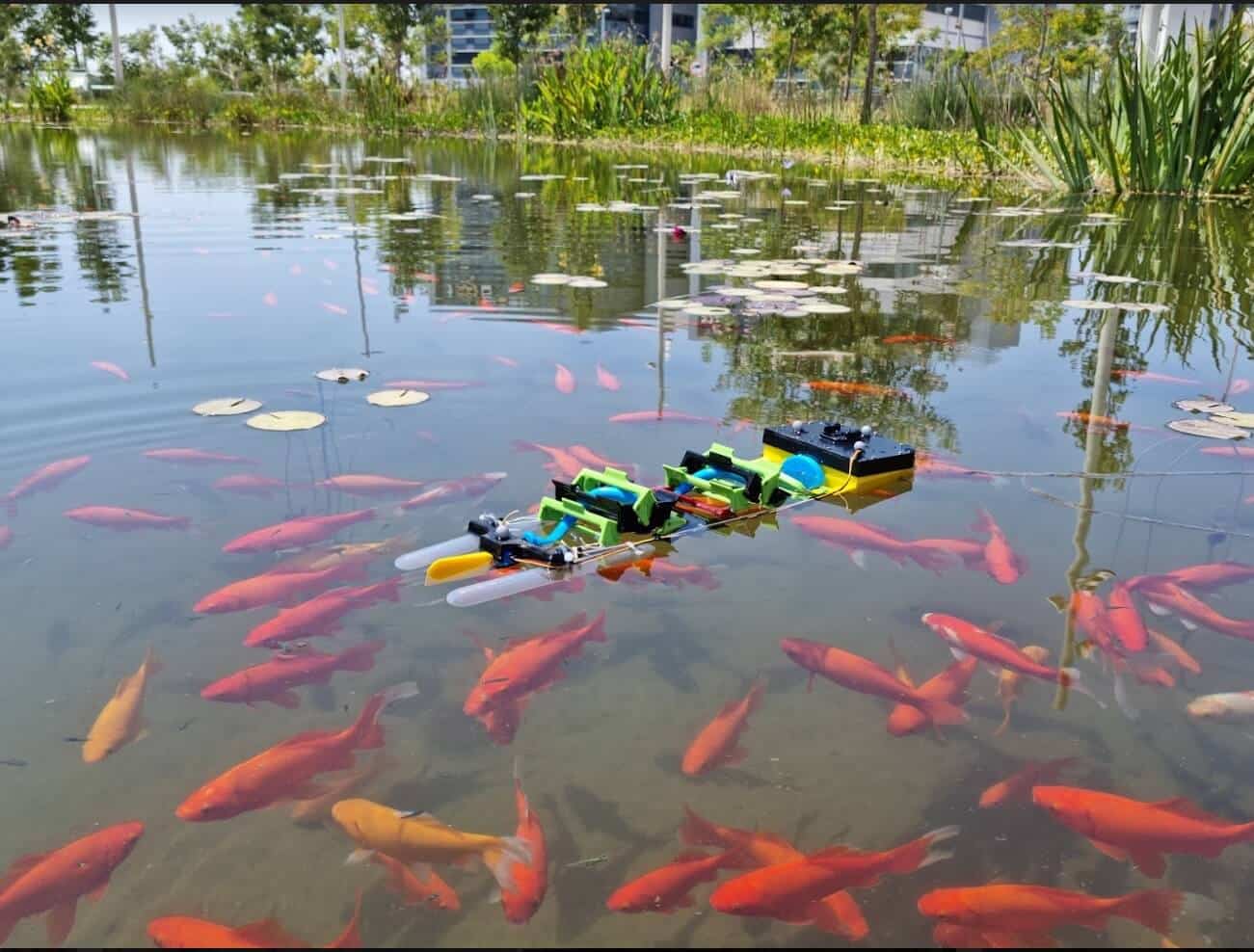In the Biorobotics Laboratory of Ben-Gurion University of the Negev under the direction of Dr. David Zarok, they presented the robot AmphiSAW, which draws inspiration from the worlds of biology and nature and is friendly to fish and the environment. It works both in water and on land, is used to feed fish and monitor their condition and helps rescue in disaster areas and more

If fish could talk they would likely speak in praise of the AmphiSAW, an amphibious robot that excels at swimming and crawling on land. It was developed by the researchers of the Laboratory for Biorobotics and Medical Robotics at the Ben-Gurion University of the Negev, at the end of a long research work and a complex series of experiments in different field conditions, at sea and on land.
During the experiments, the researchers were amazed to discover that the fish clung to the robot and swam next to it while it was operating, as if it was "one of their own". Not only did the robot not scare the fish (unlike most propeller-based marine robots), but it attracted them.
With due caution, it can be estimated that the wavy amphibious robot from the creator of Ben-Gurion University is the most energy-efficient amphibious robot and one of the fastest in the world. "The energy efficiency allows it a greater range of activity than other robots, as well as the ability to perform more tasks and operate for a longer period of time between charging," says Dr. Zarok, the father of the AmphiSaw, adding "that despite its appearance that resembles a water snake, Its ability to swim is created by small movements of the vertebrae that resemble the movement of millipedes (nadels) on the ground and fins in the water."
"We succeeded in designing a mechanism that produces an advancing wave in a simple way with one motor, and this is Ben-Gurion's unique patent. The mechanism is built from a coil and links. As the coil of the robot rotates, the links rise and fall with the coil and produce the undulating motion. It's a very energy-efficient mechanism, and our hypothesis is that the new mechanism we created can compete with propellers in terms of energy." Dr. David Zarok explains.
It is worth noting that the AmphiSTAR amphibious robot, which floats on the surface of the water and is considered the fastest in its category, is also a product of development by the researchers of the Robotics Laboratory operating under the responsibility of the Department of Mechanical Engineering in Ben-Gurion.
The innovative robot is endowed with a unique drive, based on undulating movement that is operated by a single motor. For comparison: other robots with similar characteristics in the world are powered by several motors and consume more energy. The wave generates thrust both in water and on uneven ground, such as sand and mud where a wheel is less effective. In order to improve its performance, it can be equipped with legs or wheels in the front part. According to Dr. Zarok, the minimalist wave propulsion method, based on one motor, allows the robot to be produced in different sizes, from several centimeters to several meters.
The Ben-Gurion robot can contribute to search and rescue in areas affected by natural disasters such as tsunamis or floods, areas that require movement capabilities on land and in water. It can also be used for precision aquaculture purposes, such as monitoring and feeding fish.
The robot was developed by the students Omer Guetta, Dan Shaf and Rotem Katz under the guidance of Dr. David Zarok.
More of the topic in Hayadan:
